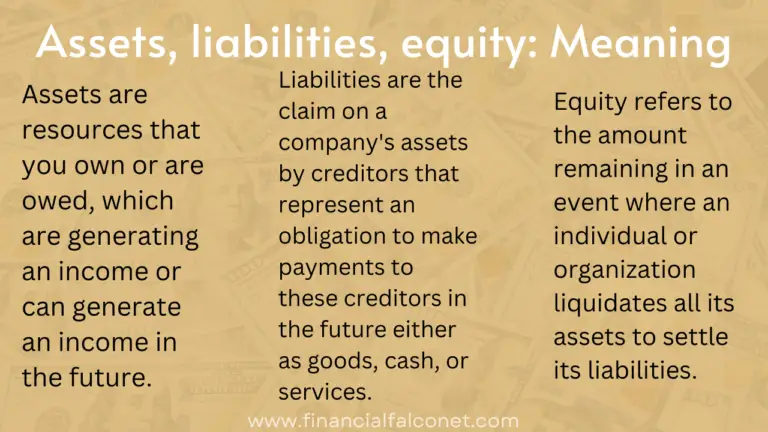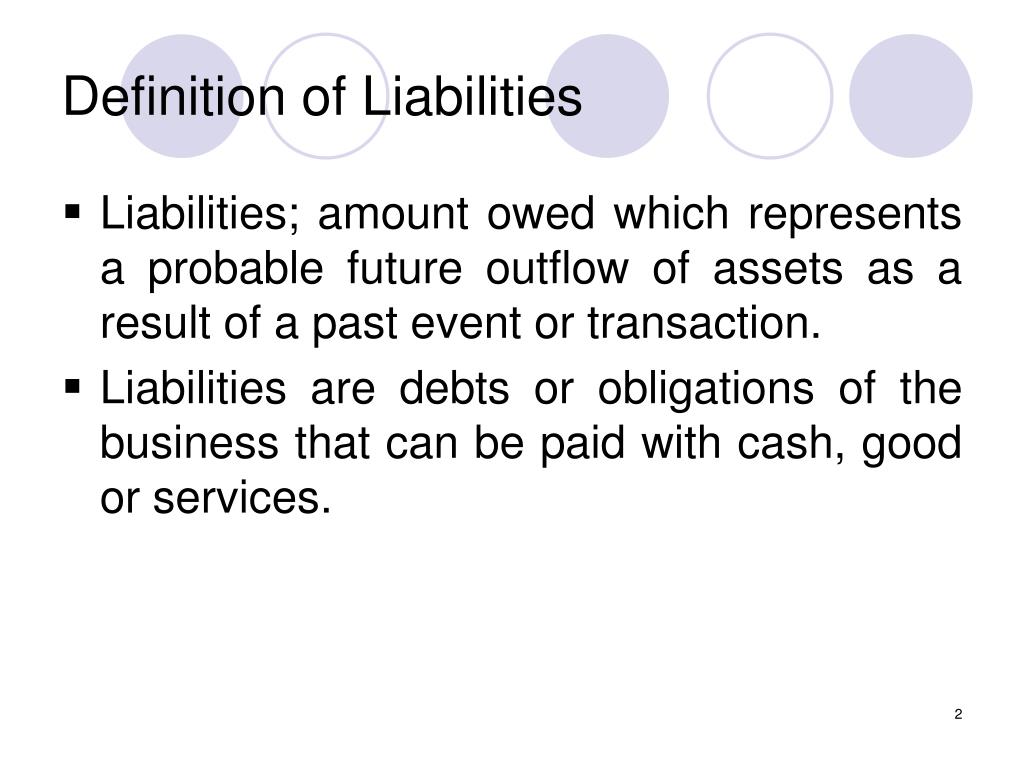Liability: Definition, Types, Example, and Assets vs Liabilities

Financial liabilities measured at amortised cost are the default category for financial liabilities that do not meet the definition of financial liabilities at fair value through profit or loss. For most entities, most financial liabilities will fall into this category. Examples of financial liabilities that generally would be classified in this category are accounts payables, loan notes payable, issued debt instruments, and deposits from customers. These include financial assets that the entity either holds for trading purposes or upon initial recognition it designates as at fair value through profit or loss. The 2013 Rule excludes from the definition of proprietary trading the purchase or sale of securities for the purpose of liquidity management in accordance with a documented liquidity management plan that meets certain requirements set forth in the rule. However, this liquidity management exclusion is currently limited to the purchase or sale of a security, and does not extend to foreign exchange derivative transactions used by a banking entity for liquidity management.
Risk-Mitigating Hedging Activities
Generally, the market in which the transaction occurs is relevant to the assessment of the time value of money element. For instance, in the UK, it is common to reference interest rates to SONIA benchmark. If the time value of money element is modified (‘imperfect’), such as when the interest rate resets every month to a one-year rate, an additional assessment is needed to determine if the SPPI test is met, as described in IFRS 9.B4.1.9A-E. A liability is anything you owe to another individual or an entity such as a lender or tax authority.
September 9, 2019 Financial services
For instance, an oil producer may sell oil futures while an airline may purchase oil futures, both not wanting to be exposed to market risk in the price of oil. The above discussions set out the basic principles for the application of IAS 39, the recognition of a financial asset or financial liability in the balance sheet and the classification and measurement of a financial asset or financial liability into different categories. These principles are an important underpinning for the further development of knowledge in this area. For example, if a company purchases shares of ABC company for $2 million, and ABC’s shares drop in value by 30%, the company would adjust the value of the trading assets to $1.4 million on the balance sheet and record a net loss of $600,000 on the income statement. A liability is something that a person or company owes, usually a sum of money. Liabilities are settled over time through the transfer of economic benefits including money, goods, or services.
Short-Term Intent Prong
Treasury securities, mortgage-backed securities, foreign exchange rate contracts, and interest rate contracts. Liabilities are listed on a company’s balance sheet and expenses are listed on a company’s income statement. Expenses can be paid immediately with cash or the payment could be delayed which would create a liability.
Covered Fund Activities of Foreign Banking Entities

The Amendments are effective January 1, 2020, but banking entities will have until January 1, 2021, to become compliant or voluntarily choose to opt-in earlier. On August 20, 2019, the FDIC and OCC approved the final rule to amend and simplify the compliance requirements of the Volcker Rule, a centerpiece of the Dodd-Frank Wall Street Reform and Consumer Protection Act. Traders should carefully manage long-term liabilities to ensure they have the resources to meet these obligations when they come due.
Permitted Trading Activities of a Foreign Banking Entity
The 2013 Rule contains various exclusions and exemptions from the scope of prohibited proprietary trading. The final rule would modify several of these exclusions and exemptions, as discussed below. IG International Limited is licensed to conduct investment business and digital asset business by the Bermuda Monetary Authority.
- Another instance is a financial services firm closing its retail mortgage sector, ceasing new business and actively selling its mortgage loan portfolio.
- Due to falling market interest rates, the bond trades at $1,020, which is the amount Entity A pays for the bond (i.e., its fair value).
- When a company buys and sells a trading asset, it is marked at the fair value of the asset.
- This category includes financial assets that do not fall into any of the other categories or those assets that the entity has elected to classify into this category.
- The final rule’s changes relate primarily to the Volcker Rule’s proprietary trading and compliance program requirements.
- Financial assets that do not align with either of the two business models are measured at fair value through profit or loss.
Charlene Rhinehart is a CPA , CFE, chair of an Illinois CPA Society committee, and has a degree in accounting and finance from DePaul University.
They are initially measured at fair value plus, in the case of a financial asset not at fair value through profit or loss, transaction costs that are directly attributable to the acquisition of the asset. Financial assets that do not align with either of the two business models are measured at fair value through profit or loss. This measurement applies, for instance, to a business model where the primary objective is to realise cash flows through the active buying and selling of assets. In such a model, the collection of contractual cash flows occurs, but it is incidental, not integral, internal revenue service to achieving the business model’s objective. A business model whose objective is to hold assets in order to collect contractual cash flows emphasises managing assets primarily for the collection of their contractual cash flows over their life, rather than for overall portfolio returns through both holding and selling. In assessing whether a business model is oriented towards collecting these cash flows, it’s crucial to consider the historical pattern of sales – their frequency, value, timing, and the reasons behind them – in conjunction with expectations about future sales activities.

